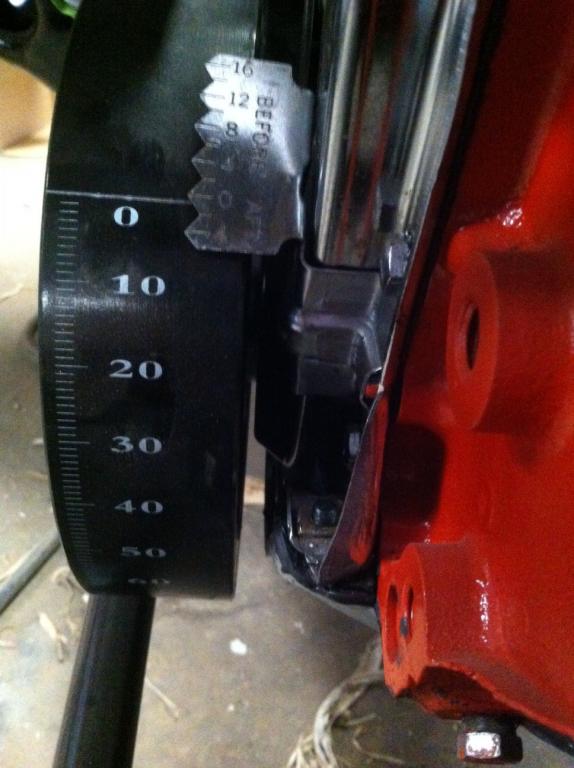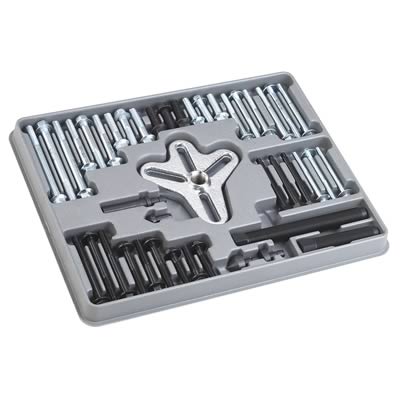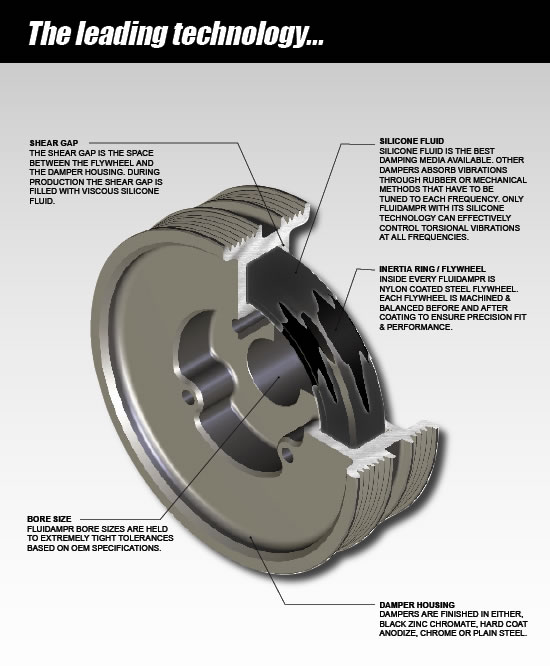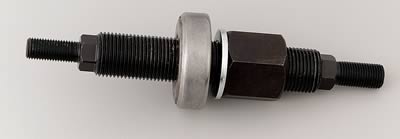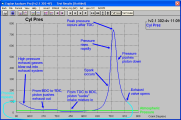TAKE TIME TO READ THRU THESE
A harmonic damper is a device fitted to the free (accessory drive) end of the crankshaft of an internal combustion engine to counter torsional and resonance vibrations from the crankshaft. This device must be an interference fit to the crankshaft in order to operate in an effective manner.

 www.dragzine.com
www.dragzine.com
http://racingarticles.com/files/general ... icle-2.pdf
http://www.fluidampr.com/HOWITWORKS.htm
http://www.atiperformanceproducts.com/p ... /index.htm
http://www.bhjdynamics.com/downloads/pd ... r_Info.pdf
http://www.popularhotrodding.com/engine ... index.html
http://www.atiracing.com/products/dampe ... amserp.htm
http://books.google.com/books?id=nbuTwX ... q=&f=false
http://www.moparmusclemagazine.com/tech ... index.html
http://www.atiperformanceproducts.com/p ... rs/sae.htm

http://www.jegs.com/i/Proform/778/66514/10002/-1
life is SOOOO MUCH easier if you buy and use the correct tools to remove and install the damper
the larger the dia. and heavier the damper/ balancer you use, the more effective it can be at absorbing/cancelling vibrations, but the DESIGN and construction of the balancer is more important than just small difference's in size.
and there's clearance issues with the cars frame and cross member on some cars.
OBVIOUSLY the better aftermarket designs cost more than the OEM elastomer band designs, but your first problem is going to be verifying exactly how your current crank assembly is designed to be balanced, and MATCHING both the flywheel and damper designed used to that application.
what your really talking about when you say balancer is a crank damper.
the stock harmonic damper is made to absorb crankshaft flex harmonics and they are tuned to work for the most common frequency and amplitude vibration with the stock rotating assy at a moderate rpms up to about 4500rpm.
when you start raising the intended rpm range or modify the rotating assembly components like use of different rods, pistons and converters or clutch assembles and intended rpm limits with etc then there's some potential power and durability to be considered with a correctly tuned damper.
the correct factory damper/balancer is ok for most street/strip engines that rarely operate over 5000rpm
.theres some moderately priced sfi dampers out there. I usually recommend ati or in limited some cases fluid damper
http://store.summitracing.com/egnsearch ... 5&x=39&y=5
A harmonic damper is a device fitted to the free (accessory drive) end of the crankshaft of an internal combustion engine to counter torsional and resonance vibrations from the crankshaft. This device must be an interference fit to the crankshaft in order to operate in an effective manner.

New Balance: The Makeup Of Modern Harmonic Balancers
A harmonic balancer is a simple device with a very important job. We look at modern balancers, how they work, and what you need for a high-performance application.
how does a harmonic damper work - Google Search
www.google.com
http://www.fluidampr.com/HOWITWORKS.htm
http://www.atiperformanceproducts.com/p ... /index.htm
http://www.bhjdynamics.com/downloads/pd ... r_Info.pdf
http://www.popularhotrodding.com/engine ... index.html
http://www.atiracing.com/products/dampe ... amserp.htm
http://books.google.com/books?id=nbuTwX ... q=&f=false
http://www.moparmusclemagazine.com/tech ... index.html
http://www.atiperformanceproducts.com/p ... rs/sae.htm

http://www.jegs.com/i/Proform/778/66514/10002/-1
Harmonic Balancer Installation
Grumpy, I found your thread on the tools and I have a good removal tool but I need to purchase a good installer before I install the damper. Here is my question that I posted on CT: Just received a new 7" ATI Super Street balancer to install on my small block crank. I was wondering has...
garage.grumpysperformance.com
life is SOOOO MUCH easier if you buy and use the correct tools to remove and install the damper
the larger the dia. and heavier the damper/ balancer you use, the more effective it can be at absorbing/cancelling vibrations, but the DESIGN and construction of the balancer is more important than just small difference's in size.
and there's clearance issues with the cars frame and cross member on some cars.
OBVIOUSLY the better aftermarket designs cost more than the OEM elastomer band designs, but your first problem is going to be verifying exactly how your current crank assembly is designed to be balanced, and MATCHING both the flywheel and damper designed used to that application.
what your really talking about when you say balancer is a crank damper.
the stock harmonic damper is made to absorb crankshaft flex harmonics and they are tuned to work for the most common frequency and amplitude vibration with the stock rotating assy at a moderate rpms up to about 4500rpm.
when you start raising the intended rpm range or modify the rotating assembly components like use of different rods, pistons and converters or clutch assembles and intended rpm limits with etc then there's some potential power and durability to be considered with a correctly tuned damper.
the correct factory damper/balancer is ok for most street/strip engines that rarely operate over 5000rpm
.theres some moderately priced sfi dampers out there. I usually recommend ati or in limited some cases fluid damper
Last edited by a moderator:


